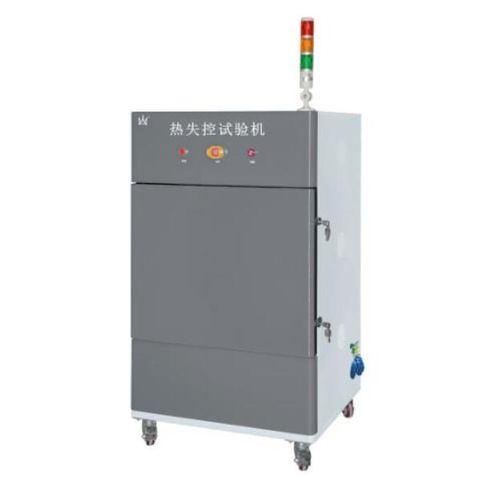
#Industry News
Li-ion Power Battery Thermal Safety Test
Li-ion Power Battery Thermal Safety Test
Lithium ion batteries have great application prospects due to their high energy density and low self discharge. However, a large amount of heat is generated during use, and the internal temperature of the battery will rapidly rise. Accidents characterized by thermal runaway often occur, resulting in serious consequences. Therefore, studying the thermal safety of batteries is very necessary.
Scholars at home and abroad have conducted a series of studies on the safety of batteries. Including but not limited to:
Analyzed the influencing factors of battery safety testing.
The working voltage and temperature rise characteristic curves of lithium-ion power batteries were studied through experiments.
A series of evolution processes of power battery accidents were statistically analyzed, and it was proposed that the core issue of battery accidents is thermal runaway.
Propose very advanced development technologies for power batteries, including electrolyte that cannot evaporate or leak, and packaging batteries with sturdy materials.
Based on the analysis of typical battery fire accidents at home and abroad, some possible control methods are proposed, including improving the thermal stability of battery materials, using safe electrolytes, and designing new fire extinguishing systems.
The working characteristics of lithium-ion power batteries and the influence of factors such as charge discharge rate and environmental temperature on battery performance were analyzed through experiments.
Analyzed the heat generation process of the battery, including the decomposition of SEI film, electrolyte, and positive electrode, as well as the reaction between negative electrode and electrolyte, negative electrode and adhesive.
The control of battery temperature by phase change material thermal storage was studied through experimental and numerical calculation methods.
Through experimental data analysis, the impact of charging and discharging rate, environmental temperature, and state of charge on the thermal characteristics of batteries was discussed. The impact of higher charging and discharging rates, lower environmental conditions, and higher state of charge on the temperature rise of batteries. At the same time, the proportion of ohmic internal resistance and polarization internal resistance in the charging and discharging process of the lithium-ion power battery was analyzed.
1 Test
The experimental system for electric heating response of power battery charging and discharging mainly includes battery, constant temperature chamber, charging and discharging device, thermocouple, data acquisition device, computer, etc. The battery adopts a square lithium iron phosphate power battery (130 mm x 70 mm x 22 mm), with a nominal capacity of 20 Ah for individual batteries.
Automatic testing equipment is used for charging and discharging to achieve constant current charging and discharging. Use a data acquisition instrument to collect the surface temperature of the battery, where the thermocouple is a K-type. Thermocouples are arranged at the center of the positive and negative electrodes of the battery, as well as the front and side of the battery. Computer controlled startup and synchronous recording of data.
Single cell power battery simulation experiments were conducted, with constant current charging and discharging at 0.25 C, 0.5 C, 0.75 C, and 1 C, to test the changes in surface temperature of the battery during the charging and discharging process under natural environmental heat dissipation conditions. Charge to 3.6 V and discharge to 2.0 V to complete the experiment.
2 Results and Analysis
The variation of temperature and battery internal resistance over time at different measuring points when charging at 1 C constant current. It can be seen that the temperature rise pattern at different positions on the battery surface is similar. The temperature rise is relatively mild before the charging process for 2500 s, but after 2500 s, the temperature at various points on the battery surface rises sharply. Analysis suggests that at the end of charging, the polarization of the battery becomes clear, and the polarization internal resistance increases, leading to a sharp increase in the battery’s heating rate.
Comparing the temperatures at different locations, the battery temperature is not uniformly calibrated. At the end of charging, the maximum temperature difference can reach 10 ℃.
Summarize the variation law of the total internal resistance of the battery over time during the 1 C constant current charging process. It can be seen that the total internal resistance of the battery does not change much during the charging process. Only in the late stage of charging, the polarization of the battery increases sharply, and the increase in polarization internal resistance leads to an increase in the total resistance.
At the end of charging a single power battery, the temperature rise of the battery varies with the charging current. The corresponding temperature rises for charging at 0.25 C, 0.5 C, 0.75 C, and 1 C are 11.9 ℃, 14.5 ℃, 28.5 ℃, and 38.6 ℃, respectively. It can be seen that the higher the charging rate, the greater the heating power of the battery. Under natural convection heat transfer conditions, the greater the temperature rise on the surface of the battery.
Single cell battery discharge process at 1 C constant current: temperature changes at various points on the battery surface over time. It can be seen that the temperature rise pattern at different positions is similar: during discharge relay, the temperature increases by about 25.2 ℃.
At the end of discharge of a single power battery, the temperature rise of the battery varies with the charging current. The corresponding temperature rises for charging at 0.25 C, 0.5 C, 0.75 C, and 1 C are 7.4 ℃, 15.8 ℃, 23.8 ℃, and 25.2 ℃, respectively. It can be seen that the higher the discharge rate, the greater the temperature rise on the battery surface.
3 Conclusion
By conducting the charging and discharging process on a 20 Ah single cell battery and measuring the temperature at different positions on the battery surface, a series of patterns were obtained. The constant current charging process of a single power battery results in a sharp increase in battery temperature at the end of the charging period. The temperature distribution of individual batteries is uneven, and the temperature of the positive and negative electrodes of the battery is higher than that of other areas.







